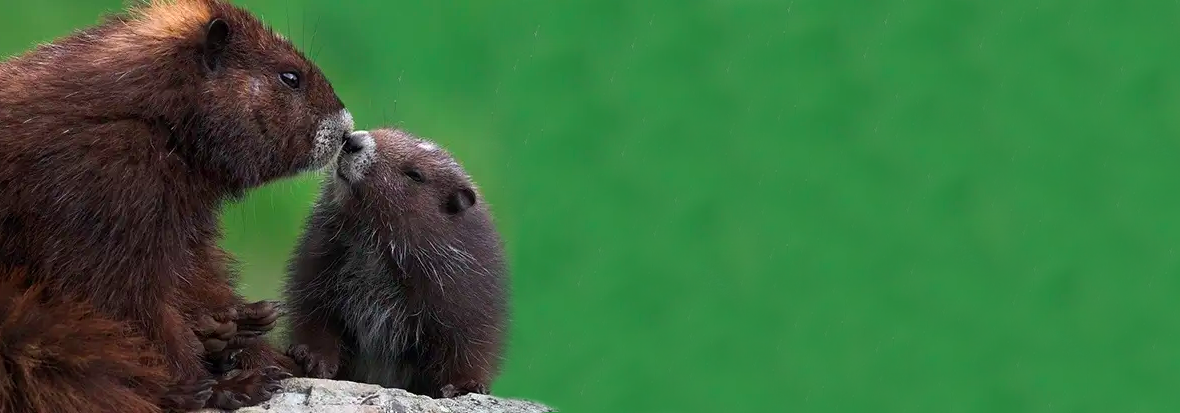
The Vancouver Island marmot hails only from Vancouver Island, British Columbia; in Canada. These are considered among the world’s rarest mammals. They prefer subalpine meadows that contain coniferous forests, steep slopes, road banks, and meadows forged by ski runs. They also face the threat of habitat destruction at the hands of the logging industry which tears up their land, making it harder to avoid predation, these critters are listed as Critically Endangered by the IUCN. Their populations are also decreasing.
First the Stats…
Scientific name: Marmota vancouverensis
Weight: Up to 16.53 lbs.
Length: Up to 28.35 inches
Lifespan: Up to 9 years
Now on to the Facts!
1.) There were only an estimated 90 wild individuals remaining, as of the 2017 IUCN study.
2.) Golden eagles, cougars, and wolves all prey on these marmots.
3.) Marmots are the largest members of the squirrel family.
4.) In the 1990s these critters became extinct in the wild, but due to wide-spread conservation efforts they have been reintroduced and are clinging to existence.
5.) There are no other naturally occurring marmot species on Vancouver Island.
But wait, there’s more on the Vancouver Island marmot!
6.) They can only be found the high mountains of Vancouver Island.
7.) The Vancouver Island marmot dwells in smaller family groups in and around burrows. Thus making them fossorial (spend most or all of their lives in burrows).
Did you know…?
A group of marmots is called a colony.
8.) Territories are denoted via scent glands in their cheeks.
9.) These critters are diurnal (active during the day).
10.) They hibernate upwards of 210 days out of the year, from September to May (give or take).
But wait, there’s still more on the Vancouver Island marmot!
11.) Switching from various grasses in the early spring to a variety of plants like lupines in late summer, these herbivores (eat plant matter) feast on around 30+ known plant species.
12.) Vancouver Island marmots are predominantly monogamous (mate for life or for numerous years).
Did you know…?
They begin breeding at around 3 – 5 years of age, but occasionally at about 2 years of age. Breeding takes place every 1 – 3 years, which adds to the difficulty of their bouncing back from near extinction.
13.) Breeding takes place just after coming out of hibernation.
14.) Females undergo up to a 35 day gestation (pregnancy) that yields up to 4 pups.
15.) Pups are born altricial (blind and helpless) and are left in the burrows till around July.
Now a Short Vancouver Island Marmot Video!
Be sure to share & comment below! Also, check out the Critter Science YouTube channel. Videos added regularly!
Want to suggest a critter for me to write about? Let me know here.
Some source material acquired from: Wikipedia & IUCN
Photo credit: World Life Expectancy



